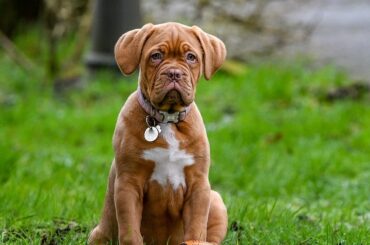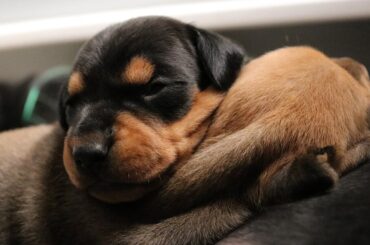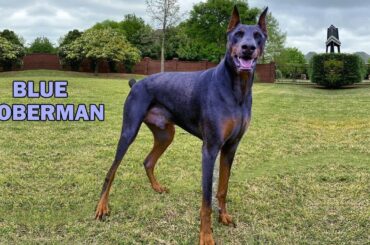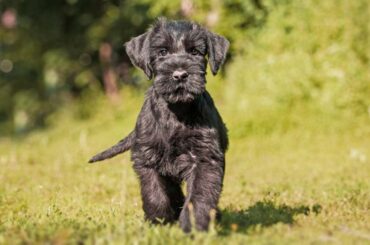Table of Contents
Introduction
Husky Tibetan Mastiff is a crossbreed dog that results from breeding a Siberian Husky with a Tibetan Mastiff. This mix can result in a unique and striking dog with characteristics from both parent breeds.
These lovely dogs are gentle giants, but they can be difficult to handle. Their parent breeds give them a strong will and an independent attitude. They can be a fantastic option for families with active lifestyles, but novice owners should avoid them.
Husky Tibetan Mastiff is a fantastic option for households with older kids. They are playful, affectionate dogs that guard their owners fiercely. Due to their large size, they are not advised for families with young children.
Wish to learn more? Now let’s find out in this article!
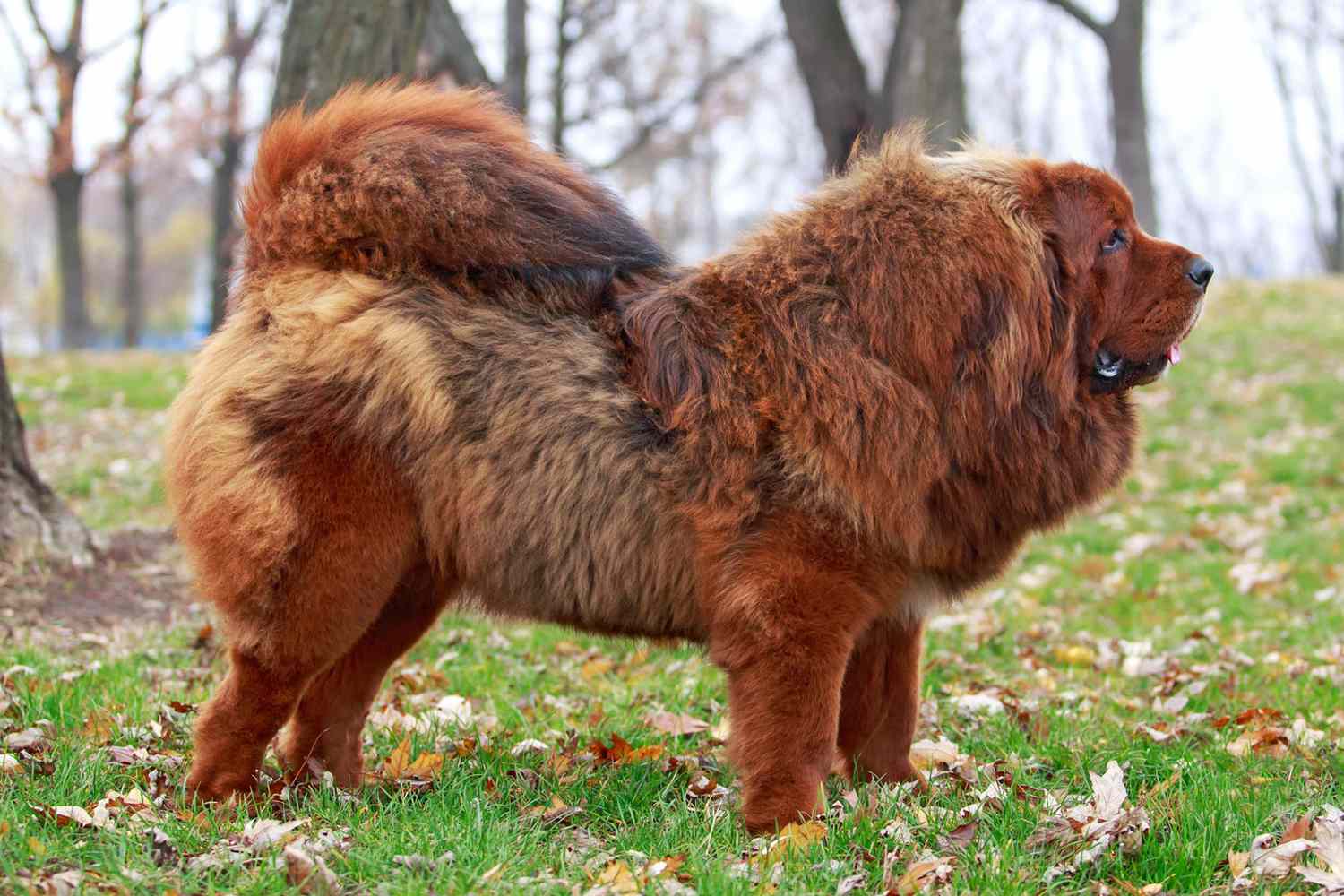
Husky Tibetan Mastiff Overview
- Alternative Names: Siberian Mastiff, Husky Tibetan Mastiff, Tibetan Husky
- Lifespan: 12-15 years
- Temperament: Intelligent, friendly, loyal, affectionate, gentle, difficult to train
- Weight: 60-120 pounds
- Height: 23-28 inches
- Eye Colour: Blue, brown
- Coat appearance: thick, double coat, cream, black, tan, blue/gray, brown, red, black, white
Husky Tibetan Mastiff Physical Features
The physical features of a Husky Tibetan Mastiff can vary widely from one individual to another, as genetics play a significant role in determining a dog’s appearance. However, a Husky Tibetan Mastiff typically exhibits a blend of physical characteristics from both parent breeds. Here are some common physical features you might find in this breed:
Appearance:
Husky Tibetan Mastiff mixes can have a variable appearance, but they often have a combination of traits from both parent breeds. This might include a Husky’s striking blue eyes, pointed ears, and a double coat with various colorations. The coat can be dense and fluffy, like a Husky’s, or thicker and more coarse, like a Tibetan Mastiff’s.
Size:
These mixed-breed dogs tend to be large in size, similar to Tibetan Mastiffs. Males can weigh anywhere from 75 to 150 pounds or more, and females generally weigh between 60 to 120 pounds.
Coat:
The coat of a Husky Tibetan Mastiff can range from dense and fluffy, resembling a Husky’s coat, to thicker and coarser, similar to a Tibetan Mastiff’s. The coat may be of medium to long length and can come in various colors and patterns, including solid colors, sables, and a mix of colors.
Eyes:
These dogs may inherit striking blue eyes from the Husky parent, but they can also have brown, amber, or even heterochromatic eyes (two different eye colors). Eye color can be quite variable in this mix.
Ears:
They tend to have medium to large-sized, triangular-shaped ears that may stand erect like a Husky’s or droop slightly like a Tibetan Mastiff’s.
Tail:
The tail can be bushy and carried in a curl over the back or hang down, and its position can vary from one dog to another.
Facial Features:
A mix of Husky and Tibetan Mastiff facial features can result in a unique appearance. They might have a Husky’s wedge-shaped head with a strong muzzle or a more square-shaped head reminiscent of a Tibetan Mastiff.
Body:
The body structure can vary, but it is often robust and muscular, similar to that of a Tibetan Mastiff. They may have a deep chest and sturdy legs.
It’s important to note that due to the genetic diversity introduced by crossbreeding, individual dogs of this mix can display a wide range of physical characteristics. If you’re considering adopting a Husky Tibetan Mastiff, be prepared for potential variations in appearance and keep in mind that their personality and care needs can also vary based on the specific combination of traits inherited from each parent breed.
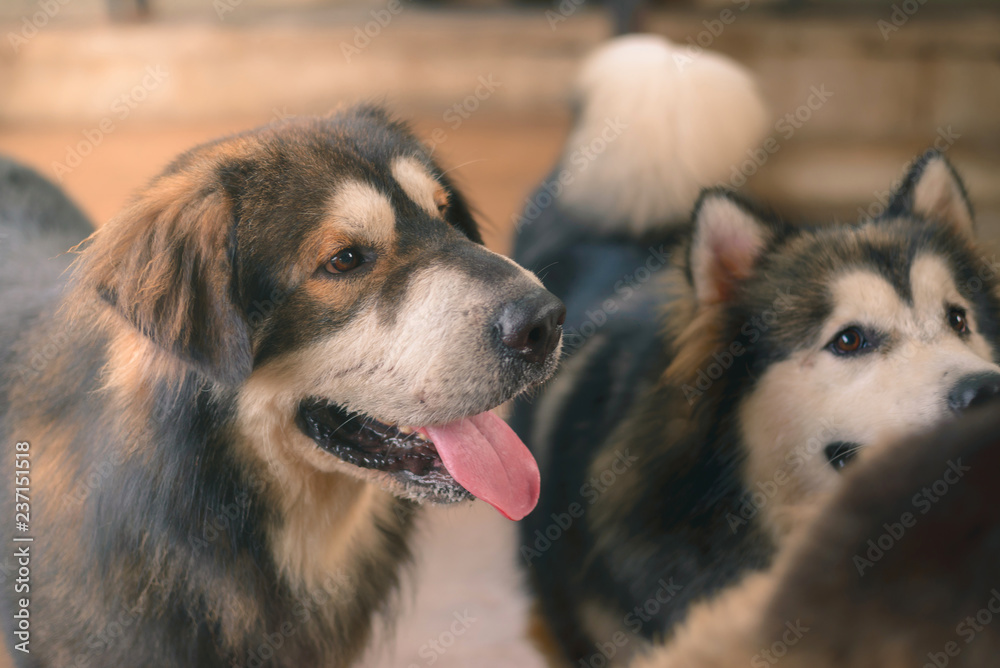
Husky Tibetan Mastiff Behavior
The behavior of a Husky Tibetan Mastiff can be influenced by the temperament and traits of both parent breeds, and individual variation is common. Here are some behavioral characteristics you might expect in a Husky Tibetan Mastiff breed:
Loyal and Protective:
Both Huskies and Tibetan Mastiffs are known for their loyalty and protective instincts. Your mix may exhibit strong protective behaviors, which can make them excellent guard dogs.
Independent:
Tibetan Mastiffs are known for their independent nature, and this trait can be passed down to the mix. They may not always be eager to please and can be somewhat headstrong.
Energetic:
Huskies are known for their high energy levels and need for regular exercise. Your mix may inherit their enthusiasm for physical activity and require daily exercise and mental stimulation to stay happy and healthy.
Social and Friendly:
Huskies are generally social dogs and tend to be friendly and outgoing. Your mix may display sociable and approachable behavior, making them suitable for families and social environments.
Strong-Willed:
Both parent breeds can be strong-willed, which may result in a dog that is intelligent but sometimes challenging to train. Consistent and patient training methods are important.
Playful:
The mix can be playful and enjoy interactive games and activities. They often retain a playful spirit well into adulthood.
Howling and Barking:
Huskies are known for their vocal nature, including howling, while Tibetan Mastiffs are often quiet. Your mix may exhibit a combination of both behaviors, with some individuals being more vocal than others.
Adaptability:
The adaptability of this mix can vary. Huskies are known for their ability to thrive in colder climates, while Tibetan Mastiffs are well-suited for high altitudes. Depending on the mix of genes, your dog may have preferences for specific weather conditions.
Socialization:
Early socialization is crucial for this mix to ensure they are well-adjusted and comfortable around other dogs and people. This can help reduce potential aggression or overly protective behavior.
Health Considerations:
Be aware of potential health issues common to both parent breeds, such as hip dysplasia in Huskies and certain genetic conditions that Tibetan Mastiffs may be prone to. Regular vet check-ups and a healthy diet are essential for maintaining your mix’s well-being.
As with any mixed-breed dog, it’s essential to recognize that individual behavior can vary widely depending on the specific genetics of your dog. Early training, socialization, and a deep understanding of the characteristics of both parent breeds are vital for successfully raising a Husky Tibetan Mastiff mix and ensuring they become a well-behaved and happy companion.

Husky Tibetan Mastiff Health
Hip Dysplasia:
Hip dysplasia is a common orthopedic condition in Siberian Huskies. It can lead to hip pain and lameness. Regular vet check-ups and a healthy diet can help monitor and manage this condition.
Bloat (Gastric Torsion):
Bloat is a serious and potentially life-threatening condition that can affect larger, deep-chested breeds like Tibetan Mastiffs. Feeding your dog smaller, more frequent meals and avoiding vigorous exercise after eating can help reduce the risk.
Eye Conditions:
Huskies can be prone to certain eye conditions such as cataracts and progressive retinal atrophy (PRA). Regular eye examinations can help detect and address these issues early.
Hypothyroidism
Both Huskies and Tibetan Mastiffs are prone to hypothyroidism. This condition can affect metabolism and energy levels. Regular thyroid function tests can help diagnose and manage this condition.
Heart Issues:
Some Huskies can develop heart conditions like cardiomyopathy. Monitoring your dog’s heart health is important, especially as they age.
Skin and Coat Problems:
Both breeds may be prone to skin conditions, including allergies and hot spots. Regular grooming and attention to skin health can help manage these issues.
Parasites:
Regular preventive measures, including flea and tick control and heartworm prevention, are essential to protect your mix from common parasites.
Weight Management:
Maintaining a healthy weight is crucial for this mix to avoid unnecessary stress on joints and prevent obesity-related health issues.

It’s crucial to provide your Husky Tibetan Mastiff mix regular veterinarian treatment, maintain a nutritious diet, and be aware of any changes in behavior or health in order to safeguard their wellbeing. The key to controlling potential health problems in your dog is early detection and management. Additionally, speak with your veterinarian for advice on the health of particular breeds, and take into account the special requirements of your particular combination depending on their genetic make-up.
READ ALSO:
- Czech German Shepherd – 7 Complete Body characteristics, Behavior’s, Caring And Health
- Samoyed Husky Mix – Exclusive Exploring The Characteristics of Samoyed Husky Mix in 2023
- Bullmastiff Dog – 6 Captivating Physical Appearance, Training And Health
- The Complete Guide to Mastiff Dog Price: How Much Does Owning a Majestic Mastiff Cost
- Neapolitan Mastiff Dog Breed Information – 4 Comprehensive Facts, Traits & More
FAQs
How big will a Husky mastiff mix get?
Husky-Mastiff crossbreed dogs tend to be more Mastiff size than Husky size. They are typically 20-24 inches tall and weigh between 50 and 110 pounds.
What is Tibetan Mastiff mixed with?
What are the most common Tibetan Mastiff mixes? The most common Tibetan Mastiff mixes are: Tibetan Mastiff-Husky mix (Tibetan Mastiff-Husky) Tibetan Mastiff-German Shepherd mix (Mastiff Shepherd)
What is the lifespan of a Tibetan Mastiff Husky?
Tibetan Mastiff Health Issues. The Tibetan Mastiff has a general life expectancy of 10-12 years. Like many other dog breeds, they can be predisposed to several medical issues, with some of these issues being genetic.

